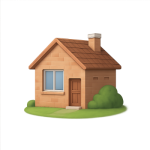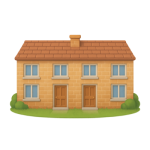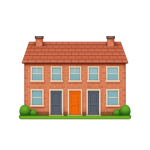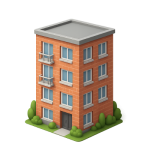Useful Links
Social
Hereford Property Prices: Local Insights You Can Use
These patterns are the kind you only notice once they’ve already happened. Hereford’s steady shift is starting to settle into view.
This House Prices in Hereford page gives you a front-row seat to what’s been moving, where, and by how much.
How much is your Hereford home worth?
Get a personalised estimate based on recent local sales and property type.
What Should Properties in Hereford Cost?
Property Type Breakdown
How big is the property?
Choose your comparison:
Hereford House Prices - Summary
An overview of house prices in Hereford since 2022.
House Prices > Hereford
| Year | Average Price | Transactions |
|---|---|---|
| 2025 (proj.) | £337,200 | 1,903 |
| 2024 | £323,700 | 1,446 |
| 2023 | £316,600 | 1,546 |
| 2022 | £315,500 | 1,911 |
| 2021 | £297,900 | 2,482 |
| 2020 | £278,800 | 1,771 |
| 2019 | £260,400 | 2,085 |
| 2018 | £254,100 | 2,077 |
House prices in Hereford are climbing faster than a cat up a tree in a thunderstorm. Since 2018, the market has marched upward with remarkable consistency. While buyers might find themselves sighing as each new year brings a fresh rise in the average property price, sellers have enjoyed a front-row seat to surprising capital gains. Even so, there’s plenty to scrutinise beneath those glossy headline numbers.
- Price growth has been positively relentless-making your average home in Hereford today cost significantly more than it did in the not-so-distant past. That trajectory is enough to make any investor or homeowner feel a little more chipper in the morning.
- On the flip side, the number of property transactions is showing a pattern a tad more erratic than the bull at Hereford’s famous cattle market. Bursts of high activity (2021, we’re looking at you), then pronounced dips suggest local buyers and sellers have at times played a cautious waiting game, perhaps spooked by higher prices or news headlines.
- If you’re weighing up whether to jump in, pause for a moment. We’d recommend reading our thoughts on how to find out what your home is worth in Hereford. It pays to do your homework when prices and volumes are playing musical chairs.
The Hereford property market is clearly more energetic than a Herefordshire cider festival on a sunny weekend, mixing upbeat price appreciation with transaction numbers that zig-zag between bullish and bashful.
So what’s the core message?
With Hereford’s average house price now comfortably above £300,000, and transaction numbers oscillating with the seasons, one thing seems certain: this market is not for the faint-hearted, but the rewards for bravery could be deliciously sweet.
The fastest way to get a read on prices? Have a browse through our properties for sale in Hereford.
Hereford House Prices by Property Type

Detached
Avg. Property Price: £423,500
Avg. Size of Property
1,417 sq/ft
Avg. Cost Per Sq/ft
£315 sq/ft
Total transactions
968 (since 2021)

Semi-detached
Avg. Property Price: £271,600
Avg. Size of Property
1,018 sq/ft
Avg. Cost Per Sq/ft
£276 sq/ft
Total transactions
1,057 (since 2021)

Terraces
Avg. Property Price: £200,100
Avg. Size of Property
827 sq/ft
Avg. Cost Per Sq/ft
£252 sq/ft
Total transactions
1,217 (since 2021)

Apartments
Avg. Property Price: £141,800
Avg. Size of Property
651 sq/ft
Avg. Cost Per Sq/ft
£224 sq/ft
Total transactions
158 (since 2021)
Hereford’s property market is showing us a unique shape - almost as varied as the rolling patchwork of the Wye Valley. Since 2021 we’ve seen rapid transactional activity across all property types, but the pricing structure tells a more nuanced tale. The cost spectrum stretches from premium detached homes, sitting near the summit, all the way down to compact flats, typically clustered at the entry level.
Detached properties remain the gold standard for space and prestige in Hereford. With their average price and spacious footprint, they command a justifiable premium. Yet, on a cost per square foot basis, it's not just about opulence - buyers are extracting genuine value here. Larger homes naturally offer economies of scale, but demand remains consistent, especially in suburbs like Holmer and Tupsley where families are eager to lay down deep roots. We’re observing that these homes attract owner-occupiers more than investors-supply is as tight as the Leominster bypass during half term.
Semi-detached homes sit at the strategic midpoint. Occupying a careful balance between size and cost, they suit both upgraders and shrewd, long-term investors. This segment’s appeal lies in its practical footprint and sensible pricing. We’re seeing those seeking flexibility gravitate to these homes-think young families moving out of city-centre flats, but still requiring manageable outgoings. The transaction data since 2021 clearly signals robust liquidity in this segment.
Terraced properties keep the wheels turning, especially for buyers hunting functional space on a more modest budget. These homes-long a staple of Hereford’s Victorian core-are showing remarkable resilience. Their smaller size means a higher cost per square foot, yet their accessibility drives the highest transaction volumes, particularly amongst first-time buyers and canny landlords who appreciate consistent rental yields as well as easier ongoing maintenance.
Flats are a different animal altogether-lean, compact, and most affordable. While their size and pricing place them at the starter level, liquidity is more limited and buyer pools tend to be narrower. Investors carefully watch turnover rates here, as the slowest-moving segment may signal growing preference for freehold tenure or simply dampened demand for low-rise, leasehold stock in a city ringed by greenbelt.
If you’re ready to dig deeper into local value, explore how to find out what your home is worth in Hereford.
What can we conclude?
- Detached and semi-detached homes offer the optimal intersection of space, value, and lifestyle appeal for buyers planning to stay put for years.
- Terraced houses are unrivalled for high transaction volumes and continue to attract first-time buyers and rental investors focused on yield stability.
- Flats, despite their entry-level allure, now face stiffer headwinds, making freehold homes the more popular choice for security and capital appreciation.
Hereford Property Prices by Local Area
| District | Avg Price (£) | Transactions |
|---|---|---|
| HR1 | £302,400 | 4,142 |
| HR2 | £276,900 | 3,962 |
| HR3 | £358,300 | 988 |
| HR4 | £275,400 | 4,329 |
| SY7 | £175,000 | 1 |
| WR6 | £130,000 | 1 |
A glance at Hereford's postcode districts uncovers a complicated pattern of pricing stratification and market velocity. For buyers, sellers, and sharp-eyed investors, the contrasts run deeper than mere numbers. In the west, attempting to secure a competitively-priced home can feel more fraught than finding parking at the Old Market on a Saturday afternoon.
District-driven disparities are glaringly obvious. Core central areas - where heritage blends with daily hustle - see consistently robust demand. Market fluidity is highlighted by substantial transaction numbers in HR1 and HR4, reflecting a blend of long-term owner-occupiers and a restless supply churn. By comparison, peripheral districts, like those crossing county lines, barely register, with solitary transactions in WR6 and SY7, making them outliers in liquidity and buyer attraction.
The market’s pricing ceiling sits in HR3, historically admired for its scenic appeal and larger plots. Buyers pay premiums for privacy, bucolic outlooks, and generously-proportioned homes. Average values here outpace other districts by a wide margin - though stock and turnover remain comparatively compressed, meaning demand frequently outstrips supply. Unlike the bustle in HR1, where competition spills over into sealed bids, HR3’s classical market town atmosphere drives persistent upward pressure on average sold prices.
- For buyers fixated on budget, transactional hotspots like HR2 and HR4 offer fairer access to the local ladder, balancing access to town, amenities and rural edges. Read more on the most affordable options in Hereford here.
- Sellers in central HR1 or active HR4 are likely to see competitive bidding climates, driven by highly engaged buyer pools and ~steady annual turnover.
- Investors chasing yield would do well to interrogate transaction density, rather than headline prices, as liquidity remains the true bellwether of near-term capital growth and exit flexibility.
So, what should we remember?
- HR3 is a prize for those able to pay the rural premium.
- HR1 and HR4 appeal to pragmatists hunting for activity, certainty, and adaptability across market cycles.
- Peripheral postcodes record minimal movement, suiting only the most patient or niche buyers.
District, not just property type, is the pivotal variable in Hereford’s pricing puzzle. In short, postcode counts for more than postcode lottery odds.
House Prices in Hereford vs Nearby Towns
| City | Avg Price (£) | Transactions |
|---|---|---|
| Leominster | £260,300 | 1,522 |
| Ross-On-Wye | £320,500 | 1,733 |
| Bromyard | £259,000 | 608 |
| Ledbury | £302,800 | 1,416 |
| Newent | £297,400 | 852 |
| Monmouth | £327,800 | 1,365 |
| Malvern | £323,400 | 4,264 |
| Coleford | £259,100 | 1,128 |
| Cinderford | £208,700 | 1,068 |
| Abergavenny | £288,700 | 1,930 |
House prices around Hereford have climbed at a steady pace, moving upward like trekkers on Dinmore Hill, but the tone and direction shift notably with every neighbouring town. Hereford itself sits somewhere in the middle of a vibrant patchwork – not the cheapest spot, nor the priciest, but instead offering a balanced, lively market that appeals to a wide mix of buyers.
Look to the more affordable outskirts and you'll find places like Cinderford clocking up significant activity for a distinctly lower price bracket. This kind of pricing attracts pragmatic buyers looking for remarkable value and great first-step homes. The pace here is brisk: healthy transaction volumes show these markets are anything but sleepy.
Move closer to the border or towards some picturesque market towns and the scenery changes. Monmouth, Malvern and Ross-On-Wye command conspicuously higher prices, pulling in commuters, professionals keen on size and style, and second-home seekers. Premiums are paid here for scenic charm and lovely schools, but with solid transaction numbers, it’s clear there’s no shortage of demand.
- Smaller towns like Bromyard and Leominster manage to fly under the radar, offering understated value and consistent turnover. These spots are perfect for anyone wanting a quieter setting but who still want to buy into a market that remains active and well-supported.
- Ledbury and Newent sit in the mid-high range. They tend to attract buyers who want charm, connectivity, and a more boutique lifestyle, but without the full Monmouth price tag.
- Abergavenny stands out for its robust popularity. Despite its slightly softer pricing compared to the premium cluster, it chalks up energetic transaction levels and holds enduring desirability. Locals describe it as “busier than High Town market on payday”.
With that said, the market around Hereford remains dynamic, rarely dulled, and full of choice for buyers from all walks of life. Expect prices to keep stepping upward as demand for quality homes, green surroundings and well-connected locations stays healthy.
Key points to takeaway
- Affordable hotspots like Cinderford and Bromyard attract budget-conscious buyers with low price points and lively transaction numbers.
- Premium locations such as Monmouth, Malvern and Ross-On-Wye feature higher averages and steady activity, showing there’s no lack of demand for an elevated lifestyle.
- Mid-market areas like Ledbury and Newent blend appeal and affordability, creating an accessible but aspirational tier.
- Hereford itself stands firm as an all-rounder, balancing price, popularity, and flexible housing options for a true county-wide appeal.
If you’re setting your sights on a move in or around Hereford, there’s plenty to smile about – whichever pocket of the region catches your eye.
Please note, these comparisons focus just on average price points and transaction activity.
They do not adjust for differences in property size or cost per square foot. For a closer view, head over to our blog. Thank you.
Smart Data, Smarter Decisions
Using a blend of official property records and custom corrections, we clean up distortions and produce pricing that’s easy to understand, wonderfully relevant and genuinely practical. View the structure behind the insight

